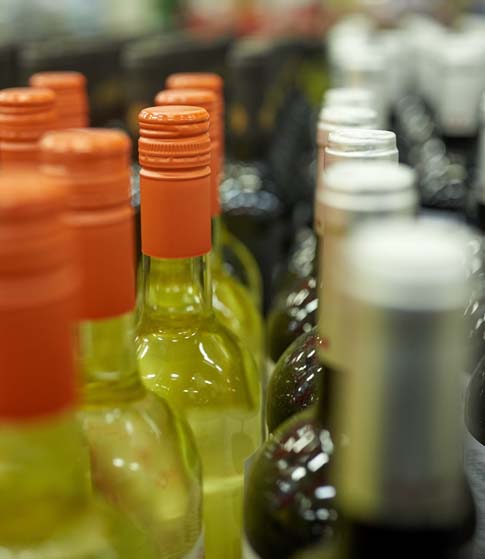Craft a Strong Foundation
Start a spreadsheet right now. It can be paper and pen or a digital program that’s plugged into your POS System, but when you’re diving into bar inventory management, you must have a place to track and manage every single bar product.
Set up the sheet to mirror exactly how your product shelves are laid out to make the process easier; then, have two employees work together on bar inventory, explains David Scott Peters, restaurant expert and founder at DavidScottPeters.com. One employee should be the bar manager, and the other should rotate between bartenders, waitstaff, and kitchen staff. This helps speed up the process while preventing theft.
Peters also recommends having recipe costing cards “because you can’t hold anybody accountable, you can’t make the money you’re supposed to, and you certainly can’t give your guests the best experience, and a consistent drink time and time again, if you don’t have your standards.”
Use FIFO
The FIFO (First In First Out), method of product rotation and pricing helps you track and organize your bar while making inventory simpler. Make sure the oldest product is in front to be used first, and any new products are stored behind the older product. Peters says FIFO helps because how the products are organized also relates to the price of when they were purchased. That way, when you’re entering your invoices, updating your inventory system, and then performing inventory, everything is correctly organized.
Don’t Allow Products to be Used Without Proper Procedures
If you don’t allow products onto the floor until they’ve been entered properly into inventory and followed all the right steps, you won’t have to work backwards to correct mistakes, explains Eamon Rockey, Director of Beverage Studies at The Institute of Culinary Education, and owner and founder at Rockey’s.
“And those steps include, but are not limited to, adding it to a menu, which then adds it onto an inventory list, which then requires you to assign a price to it, which then requires you to add it into a point of sale system with a price affiliated with it,” says Rockey, “Then, and only then, can the product be brought onto the floor and into the bar, where people can actually taste it, open it, play with it, and sell it. But at that point, the systems have been followed, such that there’s a mechanism to successfully account for its use and inclusion on menu.”
Your POS System Needs to Reflect Current Inventory
Although your Point-of-Sale (POS) system should exactly reflect current inventory, Rockey says many bars have extra buttons and items that staff can accidentally press to make inventory confusing and charge customers for the wrong products. If it’s not on your current menu, it shouldn’t be in your POS system. And if it’s not in your POS system and not on the menu, it shouldn’t be on your inventory sheets.
“One of the things I found aids in this process is having a menu, or beverage list, or wine list, that is printable from the inventory management sheets,” explains Rockey. Which means the exact sheets you’re printing out for staff to do inventory are built off your current menu, and the menus you’re printing off for guests mirror your current inventory.
Analyze Your Product Mix Report (PMIX)
Working through your PMIX ensures bartenders are pouring the same liquors they’re entering into the system. By reviewing the sales report, you can verify usage and check to see that it matches your POS system, because if it doesn’t, it may be that your staff are selling Tito’s but ringing up Kamchatka so inventory and sales don’t match, explains Peters.
Control Bar Product with Lock and Key
“All too often restaurants put their liquor inventory in cabinets that are wide open behind the bar, in the office that’s wide open, and a on a shelf anywhere that’s just wide open,” says Peters, “You’re asking to have liquid gold stolen from you.” Only managers should have the keys to help eliminate theft, and when deliveries come in, they should be locked into the liquor closet after being placed in inventory.
|
Back to Top Food and Beverage
Food and Beverage  Retail
Retail  Property Services
Property Services 

